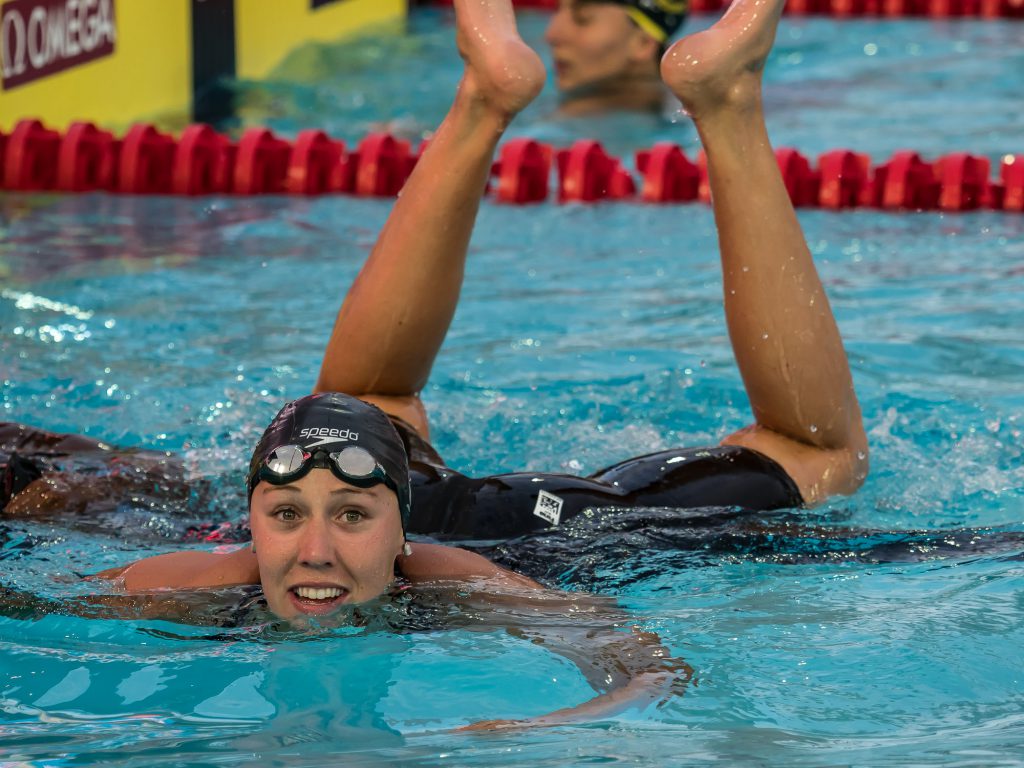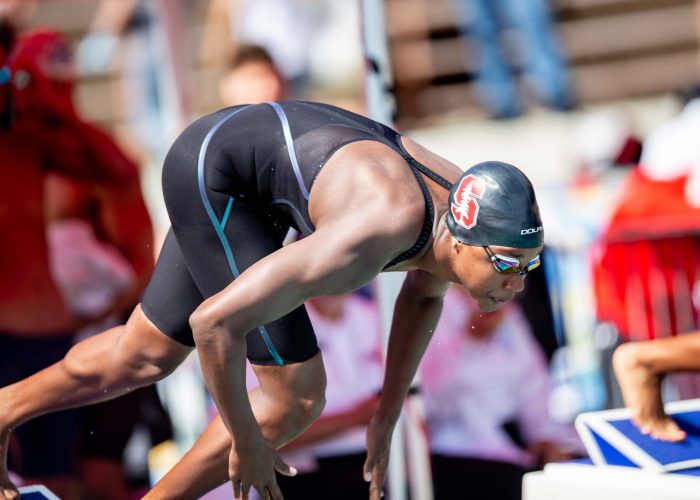What Happens To Your Body During Taper?

What Happens To Your Body During Taper?
By J.P. Mortenson
Taper is the time leading up to a big competition where swimmers decrease their training volume while increasing their rest in order to prepare their bodies to go best times. So what exactly happens to your body during taper that allows it to go fast?
During taper, an athlete’s VO2 max increases. A person’s VO2 max – also known as maximal oxygen uptake – is the measurement of the maximum amount of oxygen a person can utilize during intense exercise. It is oftentimes used to measure an athlete’s aerobic endurance and cardiovascular fitness. Having a high VO2 max is obviously very important for swimmers’ performances. Although it is extremely difficult to test a swimmer’s VO2 max because the measuring equipment does not work well in water, taper has been proven to increase the VO2 max for athletes in other endurance sports.
 Another physiological change that happens to athletes during taper is that their anaerobic thresholds increase. The anaerobic metabolic pathway does not rely on the presence of oxygen; instead, it breaks down glucose for energy and produces by products of lactate and hydrogen ions (which create an acidic environment). Lactate threshold levels are determined by how well a swimmer’s body clears the hydrogen ions that are created. The faster the speed, the higher the rate of energy breakdown with subsequent higher levels of lactate. To find the maximum speed without overloading the body with acid, the goal is to improve the body’s ability to get rid of the lactate and hydrogen ions as quickly as possible once it starts to form. However, most people generate a lot more lactate than they are capable of clearing at high intensities. The point at which the body cannot clear these metabolic waste products as quickly as they are made represent the actual anaerobic threshold.
Another physiological change that happens to athletes during taper is that their anaerobic thresholds increase. The anaerobic metabolic pathway does not rely on the presence of oxygen; instead, it breaks down glucose for energy and produces by products of lactate and hydrogen ions (which create an acidic environment). Lactate threshold levels are determined by how well a swimmer’s body clears the hydrogen ions that are created. The faster the speed, the higher the rate of energy breakdown with subsequent higher levels of lactate. To find the maximum speed without overloading the body with acid, the goal is to improve the body’s ability to get rid of the lactate and hydrogen ions as quickly as possible once it starts to form. However, most people generate a lot more lactate than they are capable of clearing at high intensities. The point at which the body cannot clear these metabolic waste products as quickly as they are made represent the actual anaerobic threshold.
When you are not exercising or are doing low-intensity work, you are almost always primarily using your aerobic metabolism. However, when you use a lot of power over a short period of time and your body’s aerobic system can no longer meet your body’s sudden energy demand (like during fast swimming), you rely on your body’s anaerobic metabolism. During taper, your anaerobic threshold increases, meaning that your body is able to exercise at higher intensities for a longer time without having to slow down to keep up with metabolic clearance. This is what allows tapered swimmers to be so explosive and have more “easy speed” where you can hold near top speed for longer.
Studies have also shown that tapered swimmers are able to produce more muscular power in the water than their non-tapered counterparts. A study conducted on twelve college swimmers tested the athletes before and after tapering for their end-of-season meet. For the study, the swimmers were tethered to a system of weights, and their power output was measured. The study showed that their “power during a tethered swim increased significantly by 5 percent with taper.” Although this is just one study, the findings would explain the increased performance seen by tapered swimmers, as being able to produce more muscular power in the water would almost certainly lead to faster swimming.
Another thing that happens to your body is that muscle damage from the repetitive contractions and extreme stress experienced during training fully heals during taper. This phenomenon makes your muscles stronger because your body rebuilds these damaged muscle fibers stronger than they were before. However, this rebuilding process often makes you feel sore and tired.

Photo Courtesy: Becca Wyant
The reduced training volume allows your muscles to fully recover during taper. Because of this, you are able to recruit and use many more of your muscle fibers, as they are no longer fatigued and damaged. Additionally, assuming you had a successful training cycle, you have more and larger fibers to use. This increases your muscle’s ability to utilize energy and be explosive, resulting in the extra power and speed that all swimmers love.
The combination of all of these factors is what make tapering so effective. If done properly, a taper should lead to about a two to three percent increase in performance, which makes all the difference in the world of swimming where every single one hundredth of a second matters.
All commentaries are the opinion of the author and do not necessarily reflect the views of Swimming World Magazine nor its staff.




Colin Mcnew
Tapering properly
is important. If your not tapered properly, you’re definitely less likely to win a big race. Hope your coach understands your personal tapering needs.
According to my swimmer and my swimmer’s teammates, they were not properly tampered going into their conference championships. Although there were a lot of expectations, most of them didn’t even come close to their season bests, especially in the 200+ yard distances
I am not a coach. I am an ex swimmer.
First you need to be properly Trained for your specific races. Sprint vs distance vs middle distance.
Then you need to be properly Tapered.
It depends on the training and the tapering.
The coach should know the kids needs.
Jacqueline Rader have Paige read this! Its interesting as to what happens in the body during taper. I knew the healing part,but that’s it!
Ying Fan Silong Valero
Lacey Lorraine Radloff you will LOVE this article!
Ian Stewart
Colin Stewart
These physiological changes do not occur automatically! Taper is a phase of the training process, not an independent event.
Evonne Stehr Oline Stehr
Kyle Bradley
David Olvera
Iesha Kota ☺️
Akiane
Edwina Ed…Sis Zabrina
This is why tapering is the most sensitive part of the training program.
Valerie Jones Knepp. A better explanation of a swimmers taper
Terri Soto-Wessenberg That was really interesting. Thanks for sharing!
Chris Hannon
Amy Davies
Lee Yanle
Tapering is important, but it’s nowhere near as important as people seem to think. It’s your planning for the big events that have the biggest effect, effective training for over a year. Not a few weeks of pseudo training before.
Tom Carter
For a taper to be successful you have to be specifically training for the particular events you wish to race at, thus faster than race pace and at race pace to build the explosive muscular power and endurance to compete and complete in the most efficient manner. This should be a goal throughout the season and not only towards the end of the season. As the body moves through the water at a faster pace the strength need to overcome this increased resistance has to be specifically trained for on a consistent basis. Thus requiring built in recovery throughout the season and not just during taper.
Very well written.
How should we taper?… How many days before should we start tapering n by how much.. Thank you
I always lost around 5 lbs during taper, but never understood why or if it was normal. Assuming no muscle loss, I guess it would be an advantage.